A guide to the 1,000
year history of BeiHai Park and its main elements.
简要北海近1000年的历史也是主要的部分。
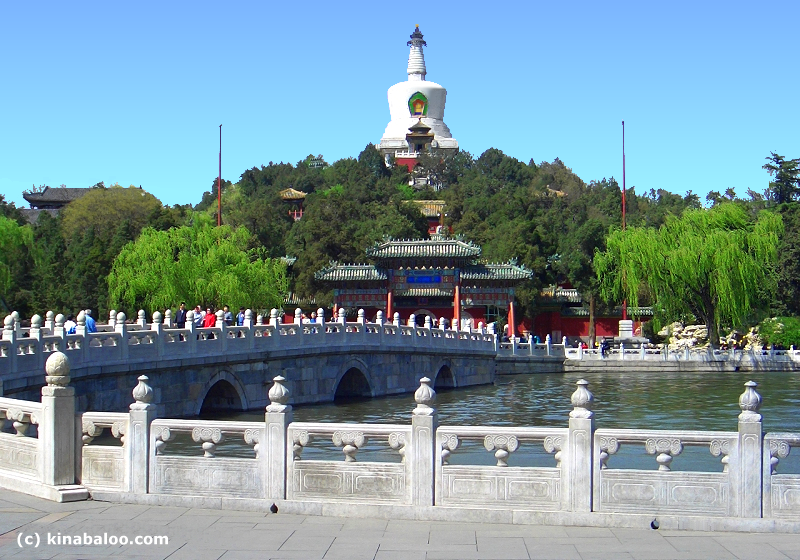
Early
History (Liao and Jin Dynasties)
早期的历史
The imperial court of the Liao Dynasty built a secondary palace on the site of
the present BeiHai Park in the 10th century. It was
called YaoYu.
When the Jin came to power, they renamed the capital ZhongDu
('Central Capital'). During the Jin Dynasty (1115-1234),
a lake was dug at BeiHai Park and the excavated earth was
used to create an island. Rocks used for building the
hill on the island were brought in from KaiFeng in Henan
Province.
Around the lake and on the
island, palatial halls, corridors and pavilions were
erected. In 1179, a Jin Dynasty emperor declared the
BeiHai Park to be an imperial garden.
早在10世纪辽代的皇帝将今北海一代开辟为游幸之地,并称为“瑶屿”。
当金朝定度北京以后,建立了金中都。在今代期间(1115-1234),开始挖建湖水,并把挖出来的土堆建成岛。堆建假山的岩石都是从河南省的开封运过来的。围绕着这个岛和湖,开始大兴土木,广植花木,营造园林离宫。1179年北海基本形成了皇家宫苑的的规模。
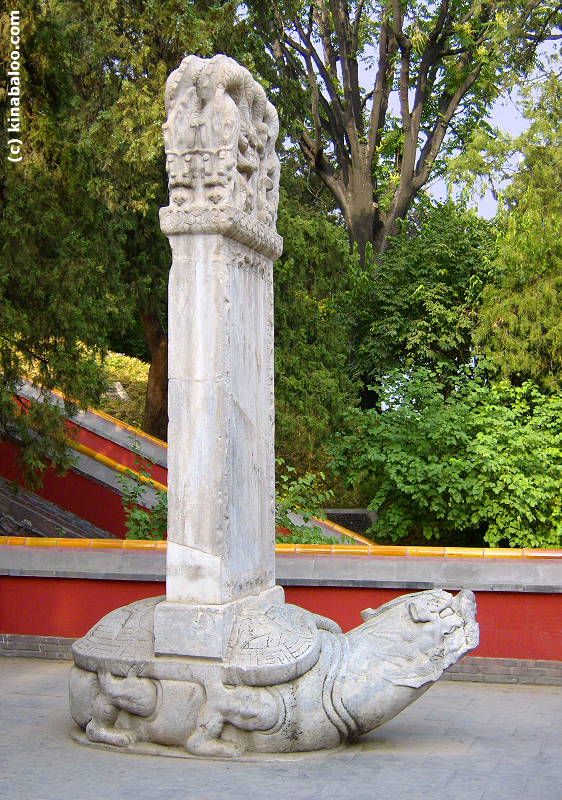
The
Yuan Dynasty and Kublai Khan
元朝和忽必烈
The history of BeiHai Park
continues when in the 13th century the Mongols conquered
the Jin and established the Yuan
Dynasty (1279-1368). They expanded the site and made it
the center of DaDu ('Great Capital'), its capital city
(what is now Beijing).
当13世纪蒙古人攻克金中都建立了元(1279-1368)之后依然继续建设北海。他们以北海的太液池为中心建立了元大都(就是现在的北京城)。
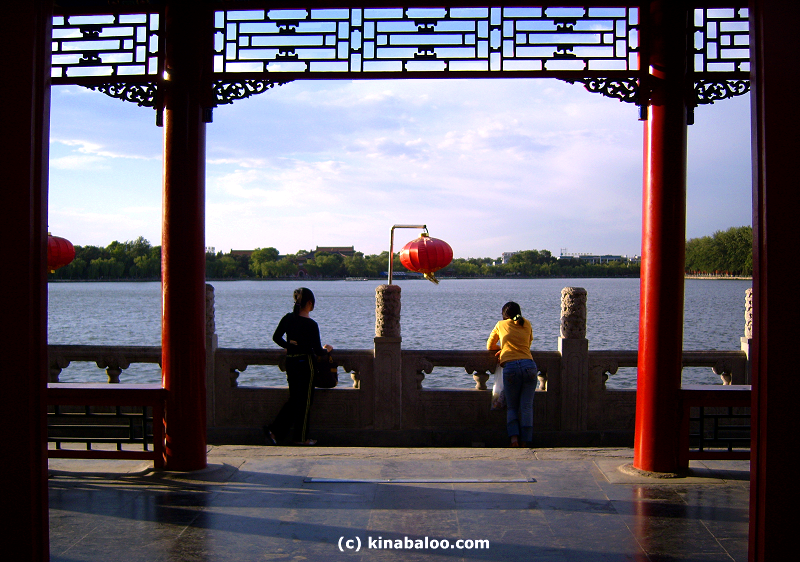
Kublai Khan, the first
Yuan emperor, carried out large-scale reconstruction of
the gardens of BeiHai Park. One of his most magnificent
feats was the construction of GuangHanDian Palace
('Palace of the Moon') on Jade Island. This was an
imposing and splendid edifice extending 40 meters from
east to west, 20 meters from south to north, and standing
16 meters high. It was a pleasure palace of the imperial
famiIy and also the scene of grand ceremonies and
banquets. And it was where Kublai Khan lived.
元世祖忽必烈,在他统治期间对琼华岛进行了扩建和修缮。他的其中一大壮举是在琼华岛上建立了广寒宫(月亮的宫殿)。这是一个非常华丽壮观的建筑,东西厂40米,南北宽20米,高16米。它是皇家玩乐的地方,也是召开盛大典礼和宴会的地方,忽必烈就住在这。
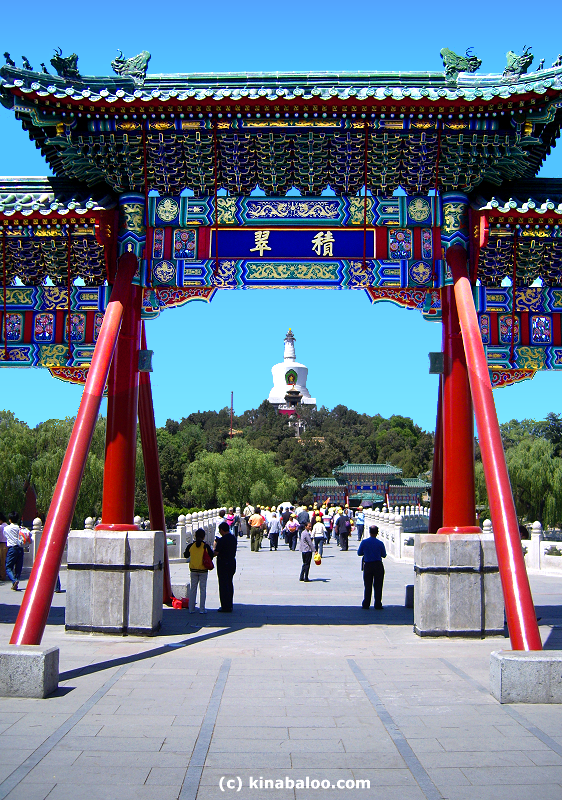
A view of the white dagoba on Jade
Island from near the south (main) gate.
When Marco Polo visited
Beijing in his travels through China at the end of the
13th century, he heard much praise of this imperial
garden of the Yuan rulers. After meeting Kublai Khan
there, he wrote that BeiHai Park seemed like paradise.
Unfortunately, GuangHan Palace was badly shaken by an
earthquake and it collapsed three hundred years later.
当13世纪末,马可波罗的旅行穿越中国的时候,他听到了很多赞赏关于元世祖的花园。在会见了忽必烈之后,他写到北海公园看起来就像一个天堂。然而不幸的是,在一次地震中受到了严重的振动,屹立了300年的广寒宫倒塌了。
The
Ming Dynasty and Emperor YongLe
明朝永乐年间
When the entire city of
Beijing was reconstructed and laid down in its more or
less current plan (1406 - 1420) during the reign of 3rd Ming dynasty Emperor YongLe, Beihai Park was
restructured. The lake was expanded and turned into the
centerpiece of this magnificient and classical example of
a chinese garden.
在明朝第三任皇帝永乐年间(1406-1420)的时候,提出了现在全部的北京的构造计划,北海公园的功能也不调整。太液池被扩大了并且改成了中国传统园林的装饰风格。
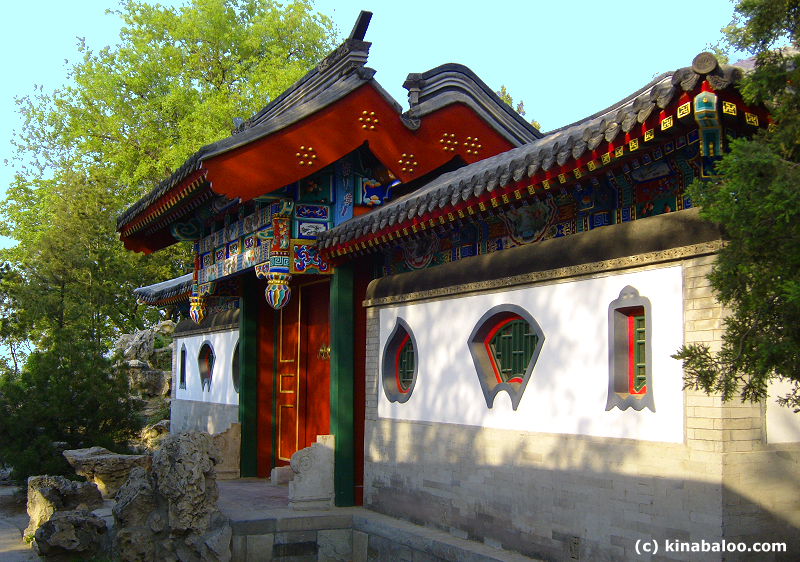
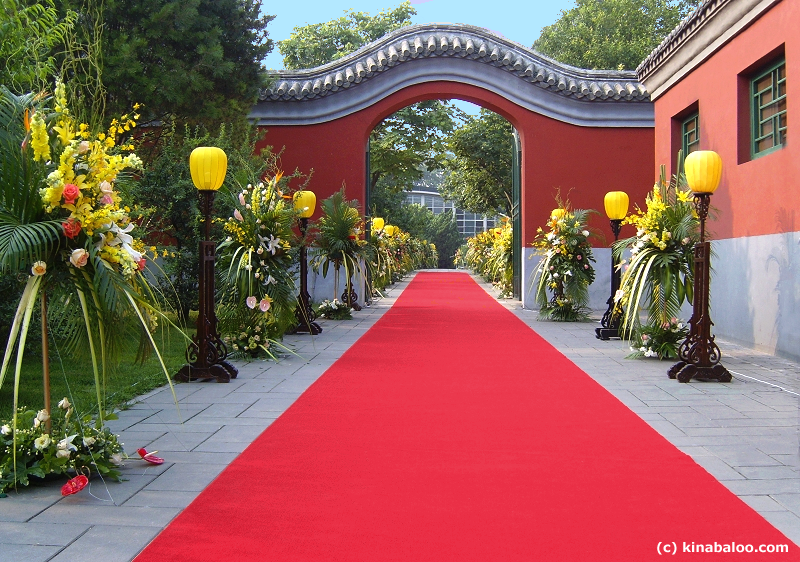
BeiHai Park continued to
function as one of the imperial family's pleasure
gardens. The primary imperial palace - here under the
Yuan Dynasty - was from now (1420) to be the newly
created Forbidden City.
北海仍然履行它的一个供皇家游乐的园林功能。真正的皇宫挪到了元大都的下面—现在(1420)新建的紫禁城。
The
Qing Dynasty and the White Dagoba
白塔寺
In 1651, the White Dagoba,
a Buddhist tower in Tibetan style, was constructed on the
ruins of GuanHan Palace at the suggestion of a famous
Tibetan Lama priest by the name of NomHan. Emperor Shun
Zhi of the Qing dynasty agreed to this project as a gesture of
his devotion to the Buddhist faith - and from a desire
for unity among China's diverse nationalities.
在1651年,根据佛的信仰为了民族和睦,清世祖福临根据著名的西藏喇嘛恼木汗的请求,在广寒殿的废墟上建造了佛教的藏式白塔寺。
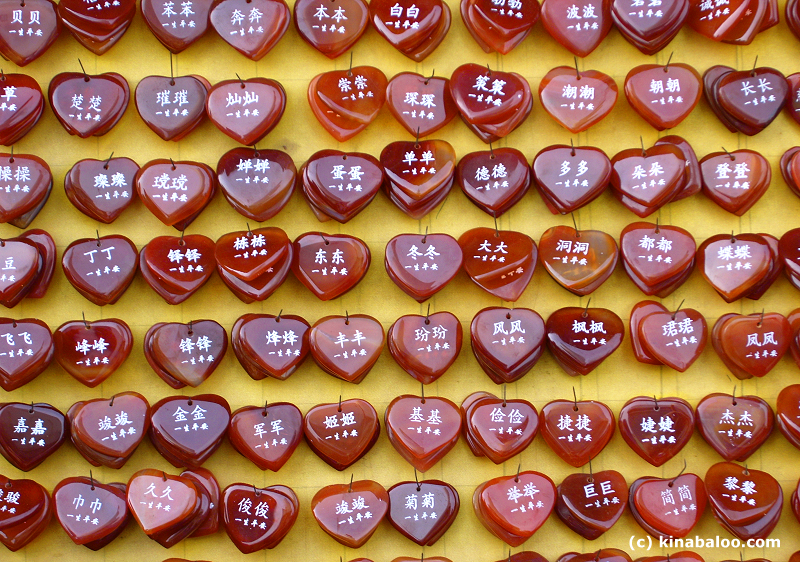
Emperor Shun Zhi also saw
in this towering structure, which would be the highest in
the capital for many years to come, a vantage point with
military significance. In times of danger, flags could be
hoisted and lanterns lit around the White Dagoba to
summon the imperial troops into battle. An iron cannon
was actually installed for the purpose of subduing
invading forces but it was later dismantled without a
shell ever being fired.
顺治皇帝也看到它的结构在未来的几年中都将是首都的最高点,这在军事上是一个有利的条件。在危急时刻可以升起旗帜,点燃灯笼以便召集御林军迅速进入作战状态。实际上为了抵御外侵还安置了大炮,但随后又拆除了点火装置。
The
Qing Dynasty (2) and Emperor QianLong(清朝乾隆期间)
During the reign of
Emperor QianLong (1736-1796), a large-scale project was
carried out over 30 years to make BeiHai an even grander
imperial garden. He spent a large amount of money and
mobilized enormous manpower to redecorate it entirely. It
was during this time that the five pavilions linked with
zigzaging bridges were built at the northwestern shore of
the lake. The famous double-sided Nine Dragon Screen was
also added during this period.
The project included many
other pavilions, halls, galleries and terraces, which
made the park even more harmonious in design.
在乾隆统治期间(1736-1796), 他用了30年大规模的改建和扩建北海,使之成为了更为宏伟的皇家园林。他动用了大量的人力物力,耗银220万量。那链接桥梁的五龙亭和著名的双面九龙壁就是那个时候建造的。这个工程还包括很多其他的庙宇、寺庙、长廊、桥、碑等使整个公园的设计更和谐了。
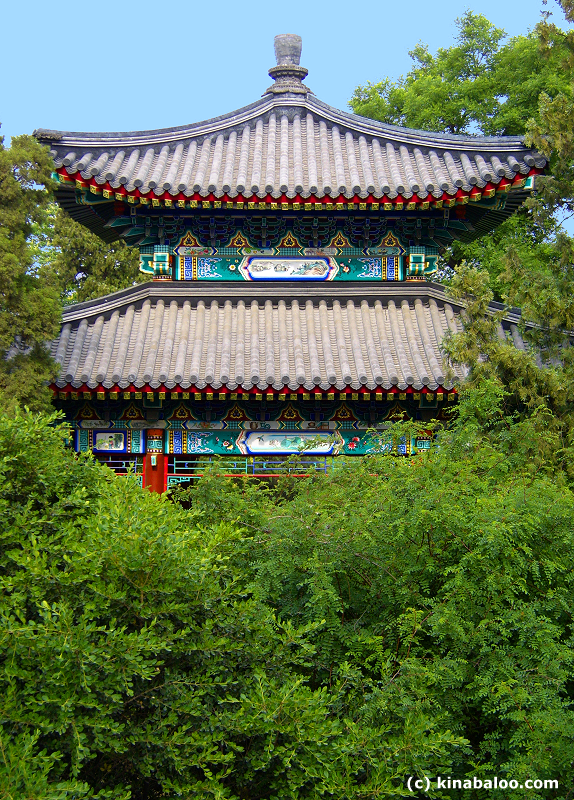
A description by Emperor
QianLong of the scenery and the process of reconstruction
was inscribed on a stone stele that is mounted in a
pavilion at the foot of the hill (YinSheng Pavilion). The
inscription is in four languages - Han, Manchurian,
Mongolian and Tibetan.
The garden now includes a
variety of important imperial family shrines and emperor
QianLongs' resting and studying quarters (of which he had
many).
The White Dagoba as we see
it today was rebuilt in 1741. The basic layout of BeiHai
now is much as it was after this reconstruction and
remains essentially as it was after Emperor QianLong's
additions.
乾隆写了一段描述关于改造工程的场景的文字被刻在山脚下的引胜亭里的石碑上。这段文字用了四种语言—汉、满、蒙、藏。
现在的公园里有很多皇帝家族的神祠和乾隆皇帝系、学习休息的地方(他有很多这样的地方)。
我们今天看到的白塔寺是在1741年重新修复的。北海现在的样子事实上,基本就保持在那次乾隆扩建后的样子,之后的各位皇帝对北海均没做较大改动。
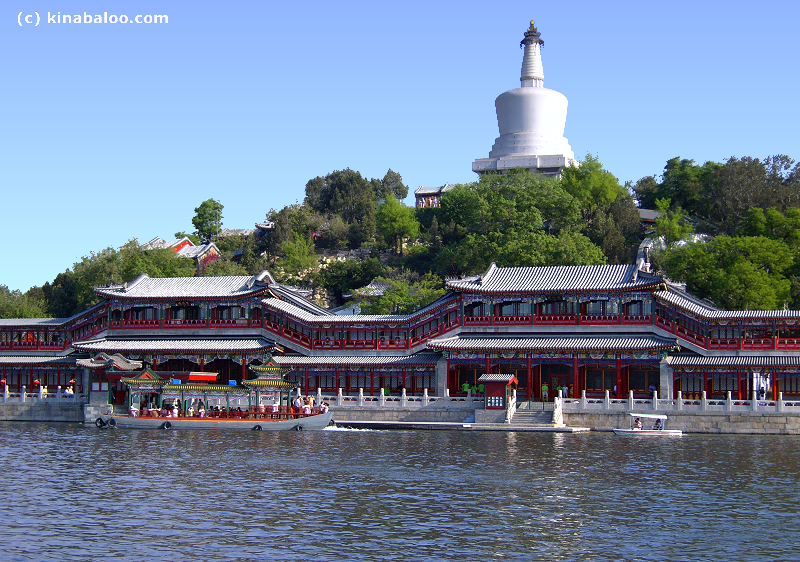
The Legend of
the Islands in BoHai Sea
岛的传说在渤海
The basic layout of Beihai Park
is based on an ancient Chinese legend. According
to the legend, there were supposed to be three
islands to the east of BoHai Bay where the gods
lived. One of them was called PengLai Island
where a type of herbal medicine grew that was
supposed to extend life.
The first emperor of the Qin
Dynasty was keen to live forever so he sent
explorers to the islands to look for the
longevity medicine, but they failed.
Emperor WuDi of the Han Dynasty
also wanted to an eternal life. So he ordered
that a lake be dug at the back of his palace,
complete with three artificial hills to represent
PengLai and the other islands. These legendary
hills were also built in the eastern capital of
LuoYang during the Sui Dynasty, and in the Tang
Dynasty capital of Chang'An.
Such a traditional style of
gardening was followed during the succeeding
dynasties and Beihai Park was built in this
traditional style.
There were, indeed, originally
three islands in BeiHai Park lake, but over the
years two have been joined to nearby land.
北海的基本布局是根据中国一个古老的神话故事 《西王母传》中描写的仙境建造的。相传渤海东面有“蓬莱”、“瀛洲” 、“方丈”3座仙山。山上神仙居住,藏有长生不老的草药。
中国的第一个皇帝秦始皇想长生不老,所以他派人去寻长生不老药,但都失败了。
到了汉朝,汉武帝也想长生不老于是降旨在建章宫后挖一个大水池,取名"太液池"。将挖出的泥土的在池中堆了33座山,象征蓬菜、瀛洲、方丈3座仙山。此后历代皇帝都会子宫殿附近建“一池三山”隋朝的洛阳,唐代的长安都如此。
像这样传统的园林风格一直跟随到以后的朝代北海就是按这个风格建造的。
的确有三个岛在过去,但随着时间的推移另外两个都和陆地相连了,琼化岛如"蓬菜",团城为"瀛洲",中海犀山台似“方丈”。 |
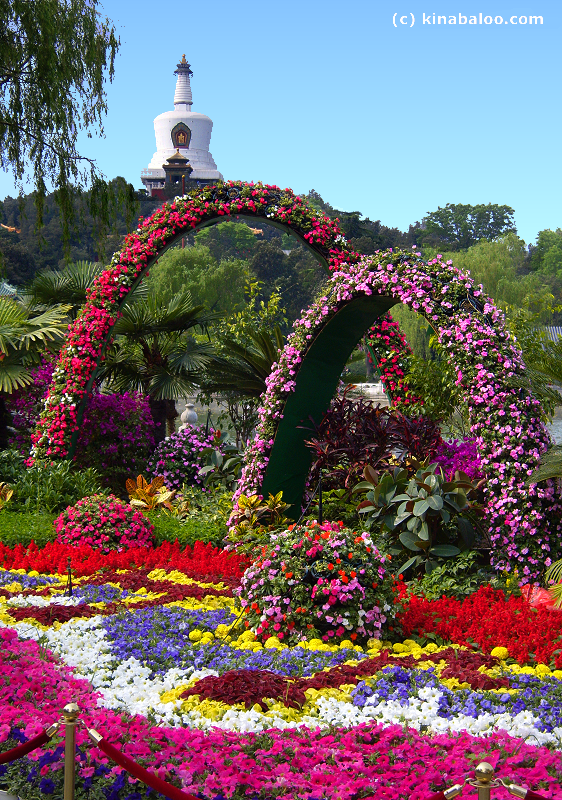
 NEXT: The
Circular City NEXT: The
Circular City
 Beihai Park Introduction Beihai Park Introduction
|
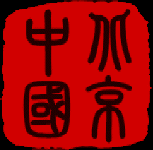
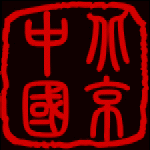



 NEXT: The
Circular City
NEXT: The
Circular City Beihai Park Introduction
Beihai Park Introduction Beihai Park Videos All ten videos
Beihai Park Videos All ten videos Beihai Park Introduction
Beihai Park Introduction Layout and Map
Layout and Map History
History

 Jade Island
Jade Island YongAn Temple
YongAn Temple Pavilion of Benevolent Voice
Pavilion of Benevolent Voice The White Dagoba
The White Dagoba The Long Corridor
The Long Corridor FangShan Restaurant
FangShan Restaurant Chamber for Reading the Classics
Chamber for Reading the Classics ZhiZhu Hall
ZhiZhu Hall

 Peaceful Heart Garden
Peaceful Heart Garden Heavenly King Hall
Heavenly King Hall DaCi ZhenRu Hall
DaCi ZhenRu Hall The 9 Dragon Screen
The 9 Dragon Screen The 5 Dragon Pavilions
The 5 Dragon Pavilions The 5 Dragon Pavilions (2)
The 5 Dragon Pavilions (2) ChanFu Temple and Garden
ChanFu Temple and Garden The Pavilion of Complete Happiness
The Pavilion of Complete Happiness Boating at BeiHai Park
Boating at BeiHai Park